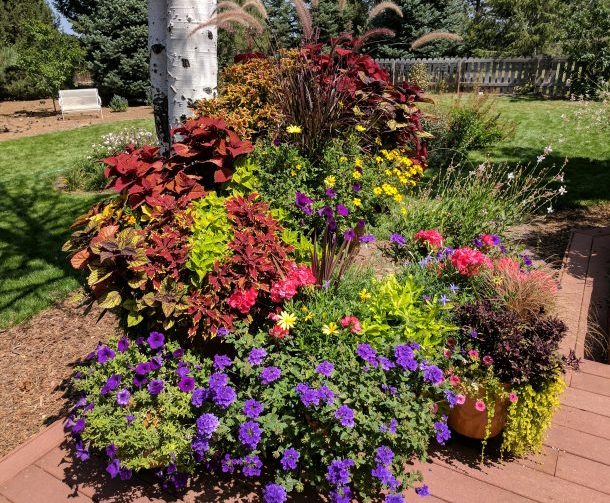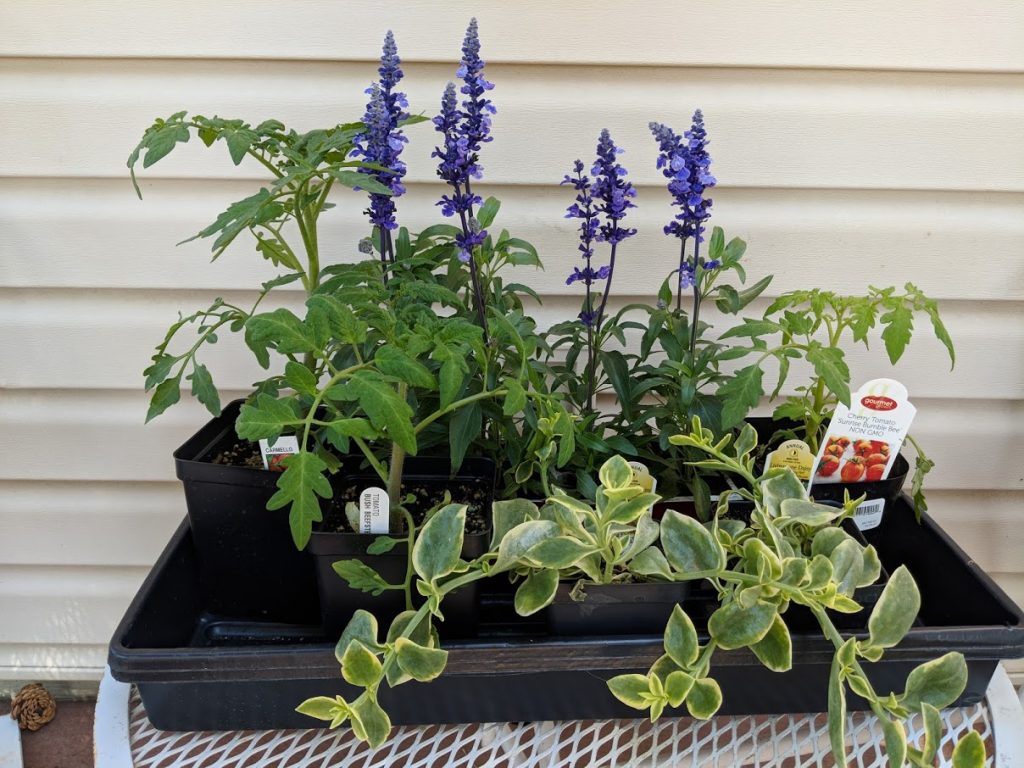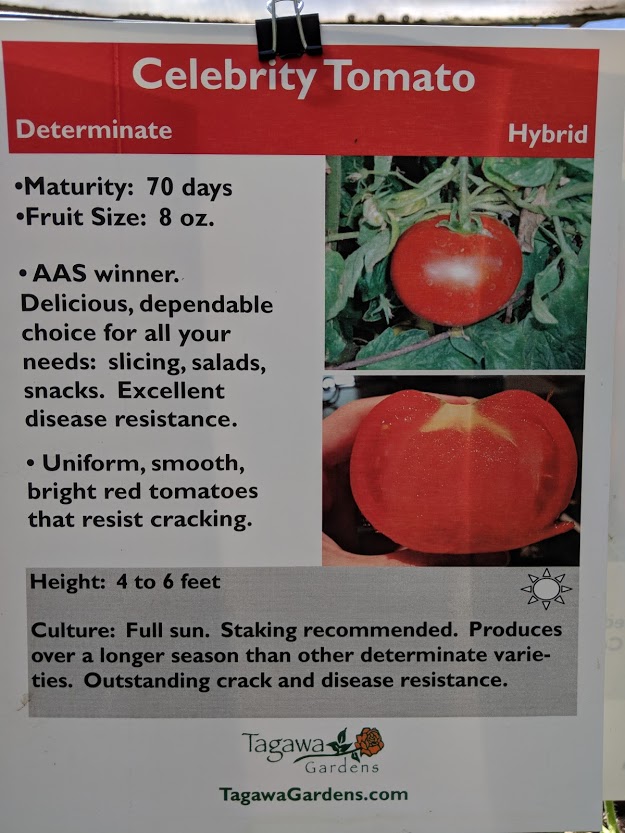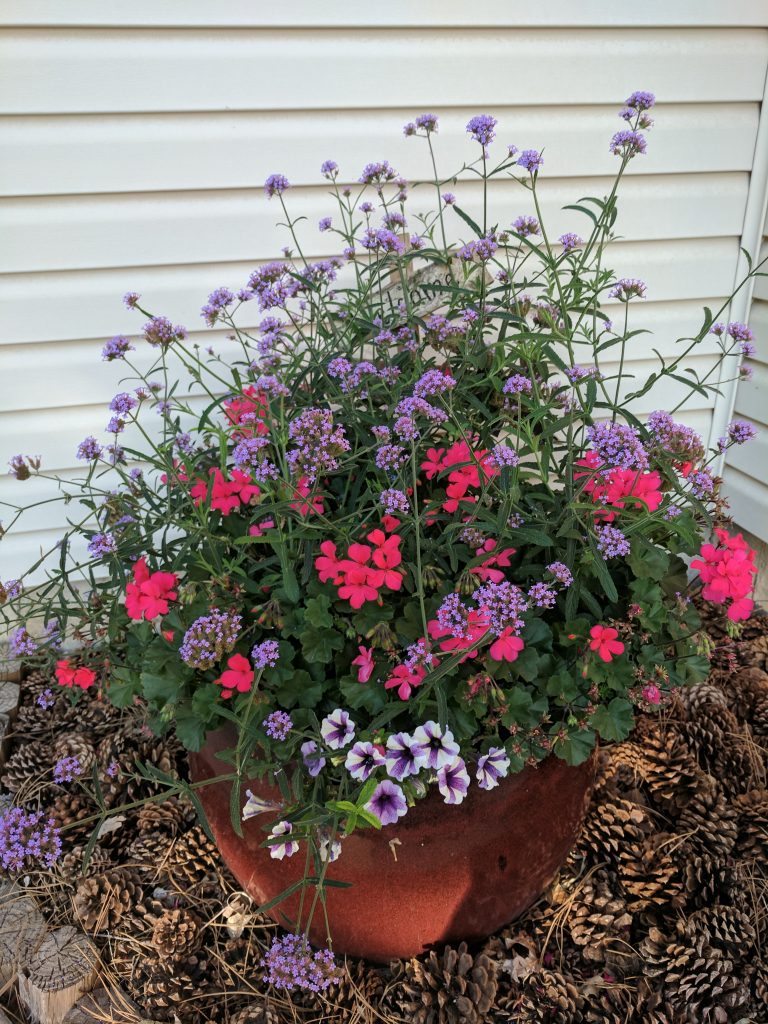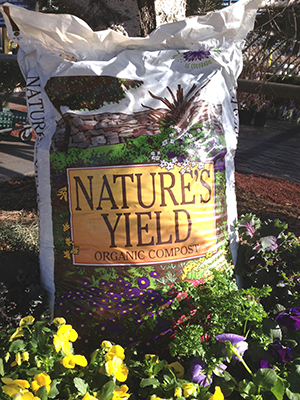Every field of interest has its jargon. Work, hobbies, social media… Gardening is no exception. That doesn’t mean these terms aren’t helpful and important.
Let’s take a look at some “garden-speak” that even entry-level gardeners should know. Understanding what’s behind these five words and concepts might just change the way you garden!
“Hardening off”
“Hardening off” isn’t at all about being hard on our plants. Just the opposite. And it can make a big difference in how well your plants grow and thrive over the summer. Hardening off is the process of acclimating plants to their new environment once they leave a temporary and very protective home, like in the Tagawa Gardens greenhouses.
The world inside Tagawa’s is like plant nirvana: steady temperatures, higher humidity, no wind. Life is very good there when you’re a plant. Conditions in our home gardens are quite different, and plants need a chance to adjust to that change slowly.
Hardening off requires that any plants growing indoors when you purchased them should be given a few days of TLC before they’re permanently placed in their new home. No full sun right away, even for sun-loving plants. And no exposure to any harsh winds.
Protect the plants from cold night temperatures. Set them out in a protected place for the first couple of days. Maybe put them up against the house at night. The next day, give them a little more exposure to morning sun and gentle breezes. At night, set them back up closer to the house. The next morning, maybe a full dose of the sun they’ ll eventually be growing in. You get the idea. Introduce the plants to their new environment gradually.
By the fourth day or so, with decent weather, they should be good to go. Water them thoroughly during this hardening off process, whenever the soil at the top of the pot dries out.
Plants that are displayed outdoors, like those in our outside Perennials Department and our Nursery Department, generally don’t need hardening off. But failing to harden off your indoor-growing plants can definitely set them back. That’s no way to start the season!
“Determinate vs. Indeterminate”
These terms come up when we’re talking tomatoes. Tagawa’s is carrying well over 100 varieties of tomatoes as the season begins. The vast majority are either “determinate” or “indeterminate.” The signs displayed above the tomatoes indicate which type those plants are. Why should you care? Because it makes a difference in their growth habit.
Determinate tomatoes will put on their crop of ripe tomatoes in a shorter (think “predetermined”) amount of time…. maybe for four or five weeks…. then they’ll noticeably slow down their production. It’s not that the gardener has anything wrong. It’s just a determinate tomato’s growth habit. Having a more concentrated harvest if great for people who love to can or who welcome a lot of tomatoes in a more condensed time frame. Determinates are also generally shorter, and may not require as much staking or support.
Indeterminates have a more extended harvest… usually fewer tomatoes at any one time, but they’ll just keep putting on new fruit for a longer season. Most, but not all heirlooms, are indeterminate. They’ll grow taller and tend to need heftier cages to keep from flopping over.
Both determinates and indeterminates have their place, but as gardeners, it’s helpful to keep their growth habits and harvest patterns in mind when we’re choosing what to plant.
Let’s talk “micro-climates”
I think this is a biggie, but a lot of folks have never heard of the term “micro-climate.” So picture your yard, deck or patio…. wherever you garden. Do you have a west-facing fence or wall? A slope? An area that catches a lot of wind or traps heat? All of those things can create conditions specific to that location… conditions that can affect how well plants will do there.
The big pot pictured above is growing in a spot that gave me fits for a few seasons. It faces east. Morning sun, no harsh winds. Easy, right? Wrong! That corner gets virtually no wind moving through, no mixing of warmer air mixed with cooler air. It’s a heat trap. Plants that love morning sun just weren’t thriving.
When I started using flowers that can tolerate more heat, the plants took off! Lesson learned. Planting with micro-climates in mind can save you a lot of headaches and disappointment. If you have questions about what’s best to plant in your micro-climates, take some pictures of those locations on your smartphone. Our Tagawa staff will be happy to help.
Is “compost” just a fancy word for soil?
No, it’s not. Compost is compost. It’s fully-decomposed organic matter. It might include leaves, animal bedding, plant debris…. all of it decomposed to the point that it’s no longer identifiable. Compost is lovely stuff, used in the right way.
Compost is much richer than even the nicest soil, which we don’t have a whole lot of in Colorado, unfortunately. Compost should be used as an amendment, something to be added to the soil and mixed in. Two to three inches of compost will help open up clay soils and help sandy soils hold moisture and nutrients. Scattered over a newly-aerated lawn, it will sift down into the aeration holes and help create a more root-friendly home for the grass roots. I add it every spring after my lawn has been aerated and fertilized. I also mix a few cups of compost into the planting holes when I plant my tomatoes.
Compost should not be used on its own as a substitute for soil or seed-starting mix. It’s just too rich!!
Whether you make your own compost or buy quality compost bagged and ready, adding it is an excellent way to improve soils like our’s that can always use a boost.
“Deadheading”
A plant’s prime directive is to reproduce. When we deadhead, we’re trying to interrupt that process. By removing flowers as they begin to fade, we’re preventing that plant from creating seeds. Once plants have produced seed, they’re likely to register “mission accomplished.”
By removing the old flowers, we’re trying to convince that plant that it’s mission isn’t over…. that it still needs to make more flowers if it wants to make seed. The more faithfully we deadhead, the more likely we are to get additional blossoms. We confuse the plants and push them to put on a longer show.
These five concepts and techniques are just a few of the things that can make gardening in Colorado easier and more fun. Always feel free to bring in your pictures and questions and we’ll be happy to help!
